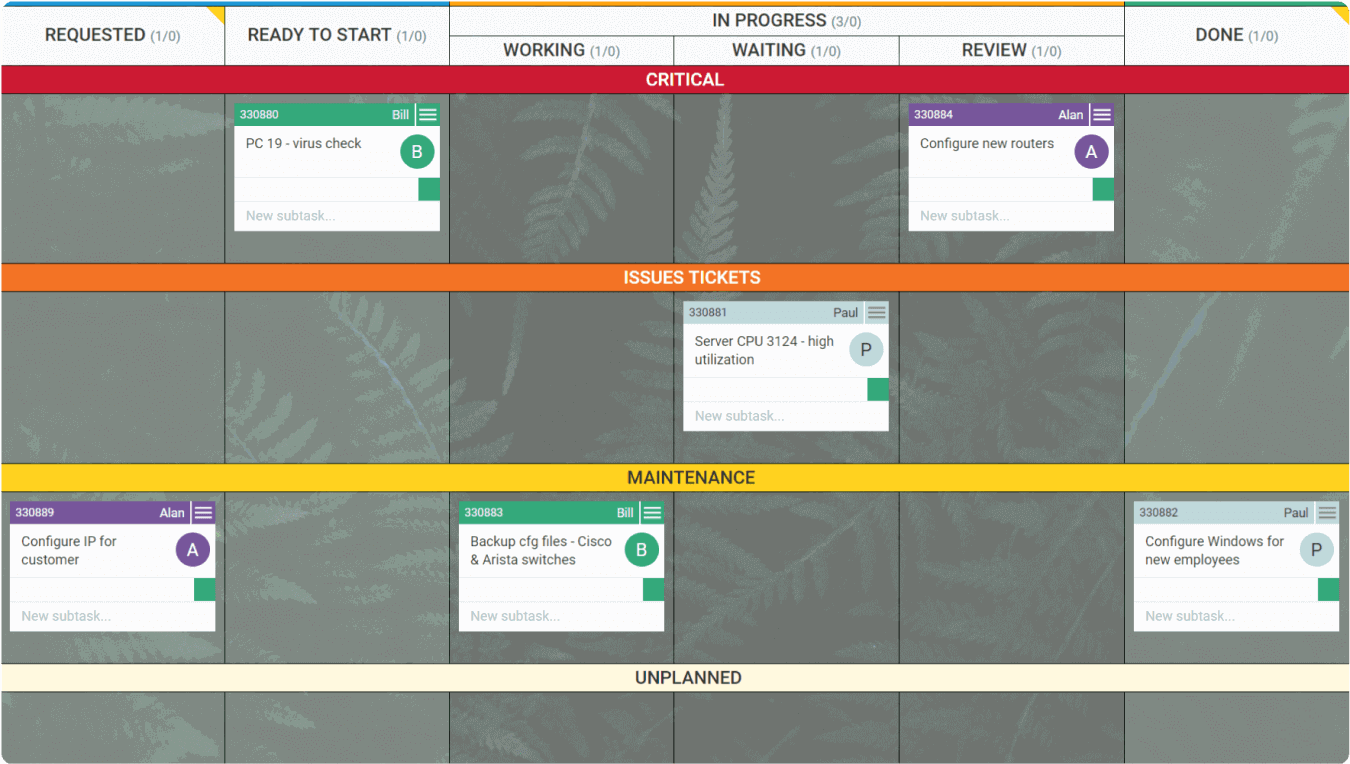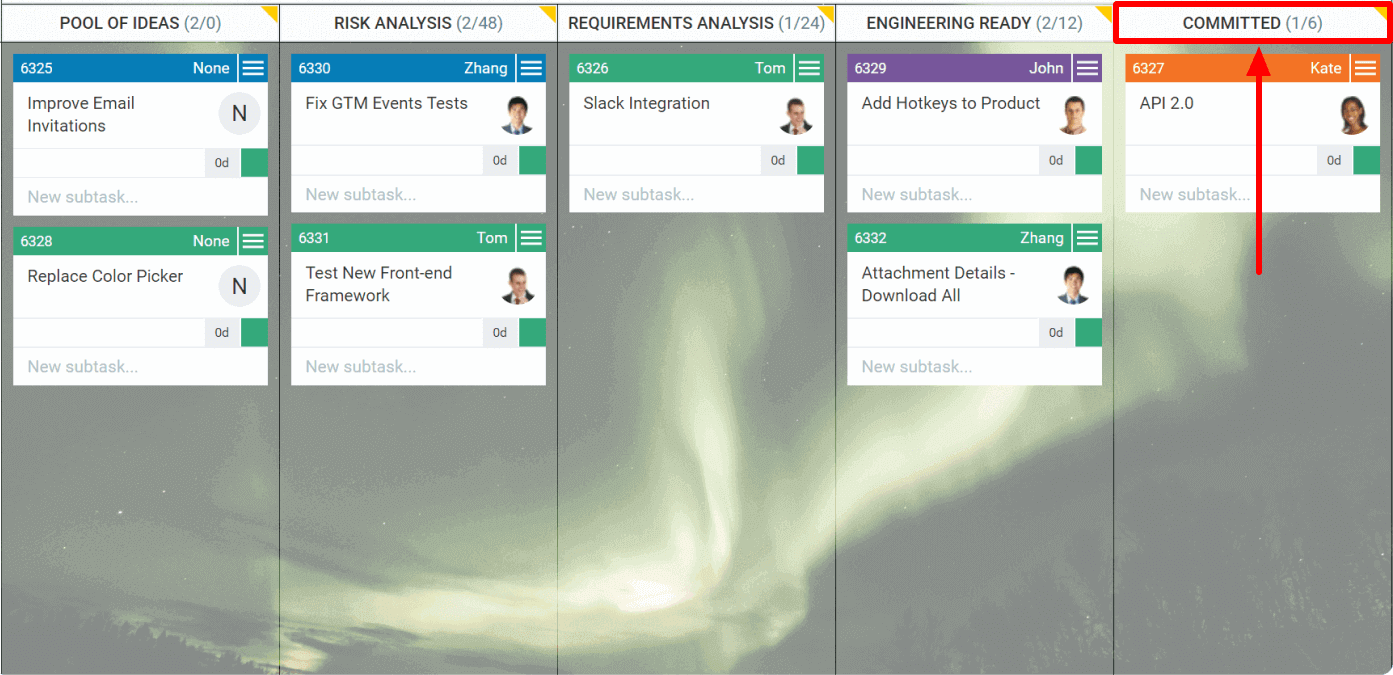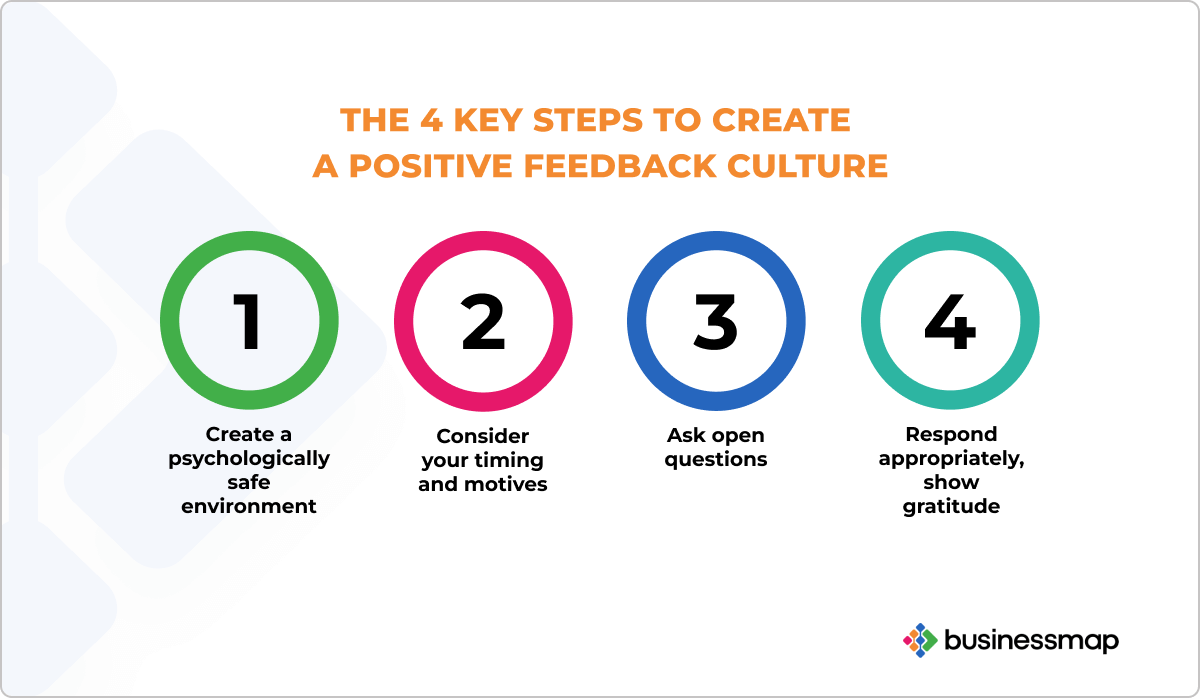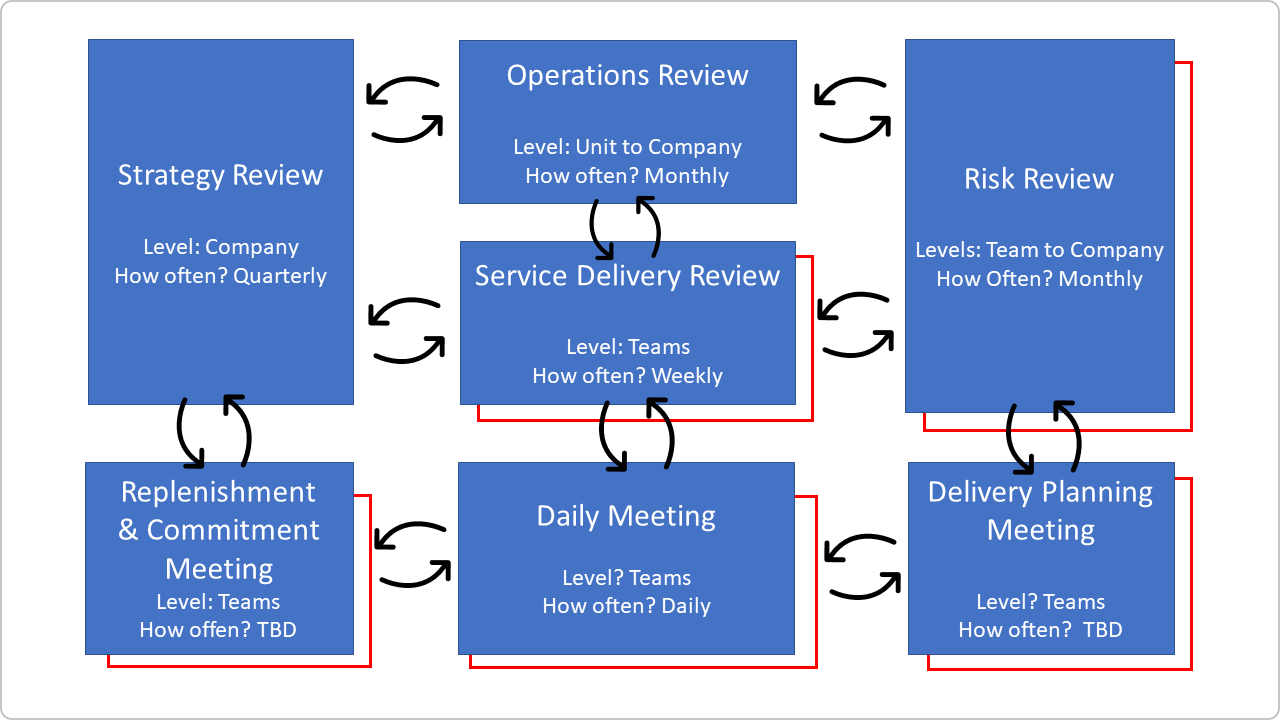"Just make sure to keep me in the loop, alright?"
How many times have you heard this expression in the organization you work for? And what happens if you end up being "out of the loop" for an important update regarding the product or the project you are working on?
It's quite uncomfortable to be put in such a situation.
We all work in organizations operating in complex environments, and for all of us to perform well, we need to build a well-designed network of feedback loops to keep each other in the loop.
As the Agile philosophy has been growing in popularity exponentially, I have to mention that feedback is a central pillar of Agile. Integrating feedback loops into your agile project workflow ensures you will collect fast and frequent feedback from your customers and increases your chances to adapt to emerging changes.
I also have to mention the role of feedback in Kanban because implementing frequent feedback loops is one of the main principles that makes the method so successful. In fact, there are a series of meetings, nurturing proper communication happening at all levels of your organization. These meetings are called Kanban Cadences, and we will explore their benefits in this blog post.
But first, for the scope of this article, let's define what feedback loops are.
What Is a Feedback Loop? Definition
A feedback loop is a two-way communication process in which a system's outputs are fed back into the system as inputs, thereby shaping future behaviors, decisions, or outcomes. In other words, it is a mechanism that keeps the flow of communication and collaboration open to exchanging ideas and gathering timely internal and external feedback.
Feedback is usually collected through regular meetings or other techniques and may come from various sources, including customers, employees, or stakeholders.
From an Agile standpoint, feedback loops are recurring meetings that assist Agile teams in validating assumptions, collecting insights, and making informed decisions using real-time data while ensuring the iterative development of their business processes.
Nurturing Continuous Feedback Loops in 3 (+1) Stages
In general, any feedback loop should have three primary stages. During the first stage, we capture and store the input - this is the data with which we operate every day. Within the second one, we actually analyze the input gathered from stage one. Finally, during the last stage, we need to make decisions based on the insights gained from the second stage.
Usually, the fourth stage of the feedback loop is the implementation of the changes we have proposed. And so it continues—a feedback loop after another. This is how continuous improvement can be easily nurtured within any organization.
Why Are Feedback Loops Important?
“The key to learning is feedback. It is nearly impossible to learn anything without it.”
– Steven D. Levitt
This quote from the American economist Steven Levitt perfectly describes the importance of feedback in our professional life and not only.
We are all aware of today's rapidly changing business landscape and that the key to success is maintaining competitiveness and swiftly adjusting to emerging trends. So, how do you tackle these changes? By staying consistently updated and continuously seeking new ways to adjust to them. The most efficient way to accomplish this is through recurring feedback loop cycles, which facilitate the flow of information sharing within cross-functional teams.
Feedback loops also help teams produce more coordinated, collaborative, and committed deliverables. They can also encourage more proactive and shared ownership within the team, improve team performance, and increase agility.
Feedback loops serve as a way to increase productivity in an individual's performance, project teamwork, or process. In Agile, feedback loops help us regularly identify areas for improvement. Then, when we turn these potential improvements into actionable work items, we can track and address the key challenges we face related to our product and processes.
Irrespective of whether the feedback is positive or negative, both receiving and providing valuable feedback is essential for organizations to fulfill customer requirements, adjust to changes, and deliver high-quality products/ services that drive business value.
Okay, so now that we've touched the surface of this topic by defining what feedback loops are and why they are important for your business, let's move on and explore their implementation with real industry examples.
How to Implement Feedback Loops the Kanban Way?
As we have already explained above, feedback loops should be an integral part of any system striving for high productivity and efficiency.
The Kanban method helps and encourages us to implement feedback loops of different kinds - review stages in our kanban workflow, reports and metrics, and a diverse range of visual indicators that provide us with continuous feedback on our work in progress.
In Agile, we often use the mantra "Fail fast, fail often!" This mantra ultimately refers to the idea of getting feedback as early as possible. Especially when we are on the wrong track with our work, it is vital to deliver the right product or service in the fastest possible time, and feedback loops are built for that.
First, to clarify this topic, let's see how we can implement feedback loops on a kanban board. We will give you an example and elaborate on the outcome.
Implementing Feedback Loops on a Kanban Board
Here is an example of an IT Operations board:  You can clearly distinguish the three stages of this kanban board - Requested (to-do), In Progress, and Done. The "Ready to Start" column is the starting point of the workflow. From there, once there is capacity, a new card to the Working column (In-progress stage) will be pulled. The feedback loop on this board is visualized very simply, and the logic is as follows.
You can clearly distinguish the three stages of this kanban board - Requested (to-do), In Progress, and Done. The "Ready to Start" column is the starting point of the workflow. From there, once there is capacity, a new card to the Working column (In-progress stage) will be pulled. The feedback loop on this board is visualized very simply, and the logic is as follows.
Let's take the card "PC 19 - virus check" from the "Critical" swimlane and move it to the next column - Working. We have to make sure our PC 19 is free of malware. That's a potential security breach. Now let`s say that we are ready; we skip the Review stage and directly move the card to our Done column.
However, imagine that you made a mistake while checking for viruses and, as no one reviewed the card, the PC is actually infected and important information was stolen. Ouch.
Besides keeping reliable antivirus software in place, will you skip the review phase again? Probably not, as it will lead to even more work in the future and generate colossal time waste. This is exactly what we try to avoid with feedback loops. If you had gone through the review stage, you would have eliminated the risk and avoided a major security problem.
Achieve Fast Feedback Loops through Kanban Cadences
But why short loops? Because short loops give us the possibility to receive fast user feedback from our customers regarding our product or service and even faster from our employees.
In the world of Kanban, feedback loops are implemented as a set of meetings with a different cadence. Now, you may think that implementing seven new meetings in one's life contradicts what Kanban and Lean teach us about meetings - having too many of them is a waste.
That's why the best practice is to integrate these cadences into your already existing meetings if possible. This may sound unrealistic at first, but it's quite easy to fit two meetings into one when they concern the same team.
The 7 Types of Feedback Loops in Kanban
Okay, let's finally explain which are these seven cadences and how they should be used:
1) Daily Meeting (Standup Meeting)
The daily meeting is the most frequent one, and it addresses questions like who is working on what, there are any blocked tasks, who needs help, and how we can help. The daily meeting is the internal feedback loop for the team working on a project but is also helpful for stakeholders who are interested in knowing how that project is going and how they can help.
2) Replenishment and Commitment Meeting
A pull system is commonly used by organizations following the flow-based management approach. This system needs tasks in the input queue so that we don't "starve" it. In the replenishment and commitment meeting, we decide what these tasks should be.
We need to decide which tasks are most important to feed into our input queue and ensure our team can commit to delivering these tasks. This meeting varies in its frequency. Depending on the context, it could be conducted weekly, bi-weekly, or on an as-needed basis.

3) Delivery Planning Meeting
In this meeting, we carefully plan delivery based on the client's needs. We don't want to deliver directly to the end customer at random intervals. Often, our clients will appreciate being able to decide how, when, and what will be delivered.
4) Service Delivery Review
In this meeting, we focus on checking the team's performance against commitments, SLAs (service level agreements), quality, customer-focused metrics, lead time, etc.
5) Operations Review
The operations review is the higher-level view of how the various teams, departments, and divisions are collaborating as an organization. It is focused on assuring global flow over local optimizations (improving a part of a system without considering the other parts) and being fit for our customers.
6) Risk Review
A risk review meeting can occur at any level of the organization and can have different cadences for different levels. It is an opportunity to identify risks in advance and take steps to mitigate those risks, such as assigning a new class of service or proper scheduling.
7) Strategy Review
The strategy review is the highest-level meeting and is conducted to ensure that we are moving in the right direction based on our company's strategic goals and changing market conditions. The meeting is an opportunity to determine whether we are still taking the right steps to ensure that our organization and operational mode are fit for our business purpose.
The Importance of Creating a Positive Feedback Culture
According to the second State of Agile Culture Report, 72% of senior leadership participants emphasized the importance of giving and receiving feedback as a fundamental aspect of fostering an Agile culture within an organization.
Establishing a culture of trust where feedback is valued marks the initial stride toward nurturing a positive feedback culture, with leaders playing a pivotal role. It is at their doorstep to proactively seek and ask for feedback and encourage their teams to feel safe to share their thoughts.
There are 4 initial steps that leaders can take to create a positive feedback culture. Let’s briefly review them.
 Credit: JCURV
Credit: JCURV
Step 1: Create a psychologically safe environment: Establish an atmosphere where employees feel secure to take risks, voice their ideas and concerns, and feel empowered to speak up if they have questions.
Step 2: Consider your timing and motives: The optimal time to ask for honest feedback is shortly after a meeting or an event.
Step 3: Ask open questions: If you seek to receive broader feedback highlighting areas for improvement, start by asking open questions.
Step 4: Respond appropriately, show gratitude: Receiving insightful feedback is a gift, regardless of whether you agree with it or not. It serves as a means to enhance your motivation towards your work and personal development. In return, consider showing gratitude to the feedback giver for their observations, even when disagreeing with the comments.
Ultimately, exchanging information and feedback not only keeps everyone in the loop but also increases their performance and opens the door to endless learning opportunities.
And as Bill Gates once said, “We all need people who will give us feedback. That’s how we improve.”
Summary
In general, these are the meetings we conduct in order to implement feedback loops the Kanban way. If you are just starting with the implementation of Agile and feedback loops in your organization, start small. First, conduct your daily meeting and see how your team feels. Sometimes, speaking your mind in front of others may feel uncomfortable, but this is a crucial step to take if you want your teams to be more proactive, improve their performance, and have fully coordinated and collaborative deliverables.

Mila Chervenkova
Marketing Expert | Agile, Kanban & OKR Practitioner
Mila is a seasoned marketing professional with a rich background in product marketing, content creation, and website optimization. Years of Practicing Kanban, Agile, and OKR practices have made her an expert in creating powerful productivity habits.




